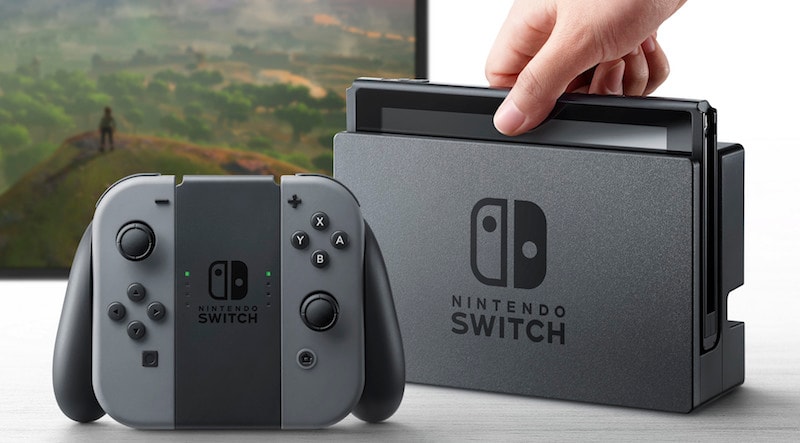- Home
- Games
- Games News
- Nintendo Switch Is Slower Than the PS4 and Xbox One: Report
Nintendo Switch Is Slower Than the PS4 and Xbox One: Report

The Nintendo Switch release date and price is yet to be known. However what we do have an idea of, is its technical specifications.
According to Digital Foundry (building on Venturebeat’s report), the Nintendo Switch is slower than the PS4 and Xbox One. In addition to this, there’s a definite performance difference between it being used as a home console or a handheld as reported earlier in the month.
(Also see: Nintendo Switch Release Date Said to Be March 17)
“As many have speculated, the new Nintendo hardware does indeed feature two performance configurations - and the console is categorically not as capable in mobile form, compared to its prowess when docked and attached to an HDTV. And we can confirm that there is no second GPU or additional hardware in the dock itself regardless of the intriguing patents that Nintendo has filed suggesting that there might be. With battery life and power throughput no longer an issue, the docked Switch simply allows the GPU to run much faster. And to put it simply, there is a night and day difference here,” writes Richard Leadbetter from Digital Foundry.
(Also see Nintendo Switch Price Listed by UK Retailer)
He further elucidates what can be expected in terms of CPU and GPU clock speeds.
The Nintendo Switch CPU speed is 1020MHz regardless of it being used in its dock or otherwise. The machine's embedded memory controller runs at 1600MHz while docked (on par with a standard Tegra X1), but the default power mode undocked sees this drop to 1331MHz. However, developers can opt to retain full memory bandwidth in their titles should they choose to do so.
Although the CPU speeds are halved versus the usual Tegra X1 chip, its the GPU that would be a point of concern.
“Switch doesn't run at Tegra X1's full potential. Clock-speeds are locked here at 768MHz, considerably lower than the 1GHz found in Shield Android TV, but the big surprise from our perspective was the extent to which Nintendo has down-clocked the GPU to hit its thermal and battery life targets. That's not a typo: it really is 307.2MHz - meaning that in portable mode, Switch runs at exactly 40 per cent of the clock-speed of the fully docked device,” reads Leadbetter’s post.
(Also see: Nintendo Switch Possibly Underclocked; Dock to Improve Performance: Report)
What’s worse is that developers can handicap performance of the device when in handheld mode if they choose.
All of this puts the PS4 and Xbox One ahead of the Nintendo Switch. Something that Leadbetter acknowledges will be a concern. More so, if you were expecting performance on par with how third-party games play on the PS4 or Xbox One.
However as is the case with most Nintendo devices, the games should more than make up for it. Hopefully we’ll hear more about those on January 13.
For the latest tech news and reviews, follow Gadgets 360 on X, Facebook, WhatsApp, Threads and Google News. For the latest videos on gadgets and tech, subscribe to our YouTube channel. If you want to know everything about top influencers, follow our in-house Who'sThat360 on Instagram and YouTube.
Related Stories
- Samsung Galaxy Unpacked 2025
- ChatGPT
- Redmi Note 14 Pro+
- iPhone 16
- Apple Vision Pro
- Oneplus 12
- OnePlus Nord CE 3 Lite 5G
- iPhone 13
- Xiaomi 14 Pro
- Oppo Find N3
- Tecno Spark Go (2023)
- Realme V30
- Best Phones Under 25000
- Samsung Galaxy S24 Series
- Cryptocurrency
- iQoo 12
- Samsung Galaxy S24 Ultra
- Giottus
- Samsung Galaxy Z Flip 5
- Apple 'Scary Fast'
- Housefull 5
- GoPro Hero 12 Black Review
- Invincible Season 2
- JioGlass
- HD Ready TV
- Laptop Under 50000
- Smartwatch Under 10000
- Latest Mobile Phones
- Compare Phones
- Moto G15 Power
- Moto G15
- Realme 14x 5G
- Poco M7 Pro 5G
- Poco C75 5G
- Vivo Y300 (China)
- HMD Arc
- Lava Blaze Duo 5G
- Asus Zenbook S 14
- MacBook Pro 16-inch (M4 Max, 2024)
- Honor Pad V9
- Tecno Megapad 11
- Redmi Watch 5
- Huawei Watch Ultimate Design
- Sony 65 Inches Ultra HD (4K) LED Smart TV (KD-65X74L)
- TCL 55 Inches Ultra HD (4K) LED Smart TV (55C61B)
- Sony PlayStation 5 Pro
- Sony PlayStation 5 Slim Digital Edition
- Blue Star 1.5 Ton 3 Star Inverter Split AC (IC318DNUHC)
- Blue Star 1.5 Ton 3 Star Inverter Split AC (IA318VKU)

















